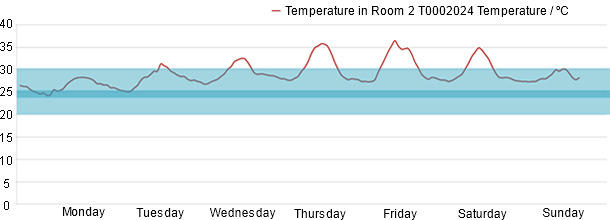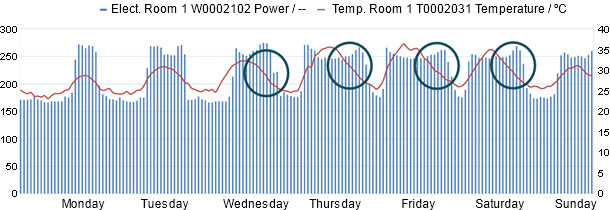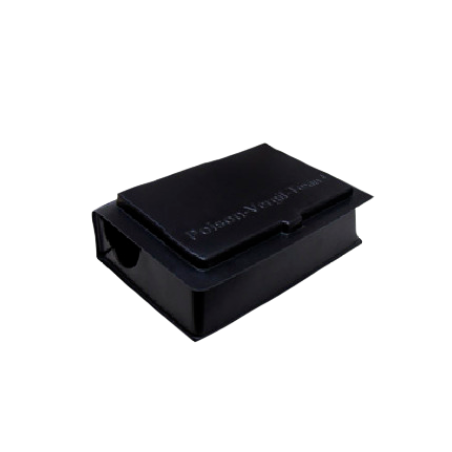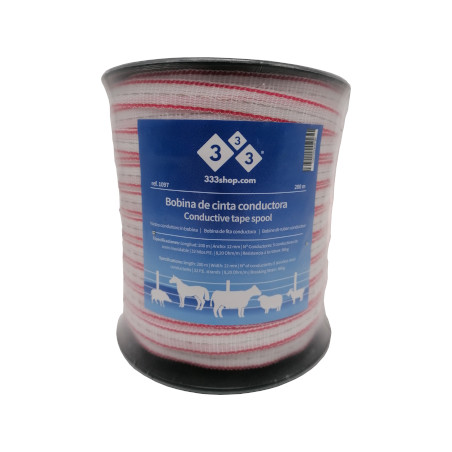Another matter with an increasing importance is the need to monitor the information, as well as analysing it. In some cases we get very near to the real-time management, and this must not surprise us because it is very usual in many aspects of our life. On January 15th 2009, when US Airways flight no. 159 crashed into the Hudson River, the first tweet that announced it only took three minutes, and since then all has been accelerating, including the management of businesses of all kinds.


The clients demand attention and an immediate reaction to their questions and problems, and any manager knows that success depends a lot on quick decisions. Every day, more companies get nearer to the real-time management, although the first ones do not pertain to our sector, because they are oil, gas and electric energy companies whose margins are extraordinarily dependent on a rapidly changing demand. It is true that in the swine sector we still do not need so much closeness to this kind of management, but without any doubt there are elements that make us think that we are getting closer much faster than we think. In fact, not only for the data of the animals, but also for those of the environment, that on many occasions are excellent indicators of existent or forthcoming problems. So, in the case of the data of the animals, as the weekly control of the abortions or the negative pregnancy diagnoses; the number of piglets born alive, dead and mummified; or the daily control of the dead animals or of those treated in key moments of their rearing, as for example the postweaning period or the stage when the pigs enter the fattening stage, they are beginning to be indispensable if we want to maintain high production efficiency standards.
Apart from these options, that are not fully implemented in our practice yet, other options derived from other sectors that are quickly adapting to ours are emerging. This situation also emerges because, on many occasions, the place where the information is generated and the one where the users are present are not the same: in the communications era this is no longer a problem, because we are living a "boom" in which the communications are increasingly more powerful, cheap and with a better range and power. So, why not to use these advantages also in our sector? Many producers and users use very powerful and expensive smartphones routinely, so, why should not we use them to control our business?
Lastly, technology also allows us, currently, in an easy way and with a low cost, to control environmental parameters in real time and to react quickly in front of deviations that anticipate problems (e.g. sharp decrease in the consumption of water) or that can cause them (e.g. a quick and unjustified temperature rise or fall), and whose control can be made from afar without the need of being, physically, at the farm. In fact, these are the first steps in order to establish a business intelligence system, such as the ones existing and present in other sectors for some time now. These systems allow us to detect and correct imbalances between what is expected in our installations and the real yield. In example 1 we see the environmental control in a weaner stage room only maintained between the optimum environmental values the 3.59 % of the time and a bit more than the quarter part of the time between the minimum adequate values (Graph 1).
Graph 1. Monitoring of the weekly temperature in the weaner stage; values inside the optimum and the adequate ranges.

Source: PigCHAMP Pro Europa SL. Unpublished data
Dark blue area: Optimum temperature interval for 5-week old piglets (Buxadé et al., 1998)
Light blue area: Adequate temperature oscillation interval
Percentage of data contained inside the optimum interval: 3.59%
Percentage of data contained inside the adequate interval: 27.54%
The daily variation is high, with an average variation of more than 6ºC (Table 1). The unnecessary cost and the risk for the health of the animals are evident.
Table 1. Daily thermal oscillation average value.
| Monday | Tuesday | Wednesday | Thursday | Friday | Saturday | Sunday | Average |
| 4.0°C | 6.2°C | 5.7°C | 8.1°C | 9.2°C | 7.5°C | 2.8°C | 6.21°C |
In Graph 2 we also see the daily temperature oscillation and its relationship with the electric energy consumption due to the ventilation. We see that a badly regulated or a non-checked system, as in this case, can still work and generate consumption even if the temperature falls and its use is not necessary.
Graph 2. Electric energy consumption vs. Room temperature in farrowing rooms

Source: PigCHAMP Pro Europa SL. Unpublished data.

We can see a clear imbalance between the electric energy consumption data (kw/h) and the temperatures, and this clearly shows us an inadequate running of the ventilation-temperature control. When seeing the daily temperature ups and downs, we notice that the electric energy consumption does not rise and fall gradually with the temperature, but that it simply activates and deactivates itself according to extreme values, without any kind of intermediate regulation. This can be due to a bad configuration or to a poor functioning of the equipment. It does not only have direct economic consequences, but also on the health state of the animals, increasing the risk of the appearance of clinical and subclinical processes.
In the near future we will have at our disposal an enormous amount of data with much more speed and ease than ever, and also from very different origins, as we have already seen. We, the professionals in our sector, must rely, more and more, on quality data. Their collection and processing is not a problem anymore, although their application in practical situations is yet far from being routine. The use of the new data collection devices (digital pens, wireless sensors and transmitters), apart from the classic ones (fax, USB), seems to be a good solution in terms of ease and cost, and it makes available to the consultant data that until now were impossible to use. The production, health or environmental data are loaded on dashboards that generate, immediately, quality information via the web; or in generic or custom-made reports. So, health, production and the environmental parameters can be controlled at any time and from anywhere, and a combined analysis generates information with an extraordinary quality. The harmonic integration of data from different sources can mean a new scenario for family farms as well as for the great producers, because the cost of the technology will normally not pose a problem.
With this approach, and using a quality business intelligence system (the software alone will not be enough), all the potential of the data will be at the disposal of the users instead of being underused, understanding and controlling quickly, much more production aspects. In other sectors, the change towards these systems has caused problems due to the lack of an adequate technology and experience: the late incorporation of our sector provides us with this advantage.
The market situation requires from us, more and more, higher quality standards and a very clear cost-benefit that supports the decision making. The approach that will be provided to us by leaning on the new technologies can be decisive during the next years as this work stream begins to be incorporated into the production routine. Transforming the information into a profitable knowledge will be an obligation for all the professionals in our sector.





